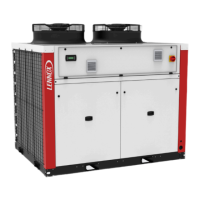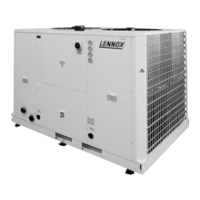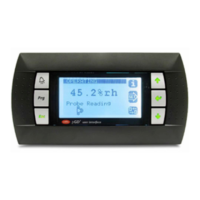• 6 •
Installation manual / eCOMFORT R32-MIL166E-0222 - 09/2022
SAFETY:
The safety information contained in this manual is provided as a guide for the safe handling of this installation. LENNOX
does not vouch for the completeness of this information and can therefore not accept liability for any possible omissions.
In the chillers, heat is being transported by a pressurised refrigerant, with changes in pressure and temperature. For air cooled chillers,
fans have been provided to discharge heat into the environment. The protection of operating and maintenance personnel was central
in the design of the chiller. Safety features have been included to prevent excessive pressure in the system. Sheet metal parts have
been tted to prevent inadvertent contact with (hot) pipes. For air cooled chillers, the fans are equipped with protective grids and the
electrical control panel is completely touch-proof. This excludes some parts operating at a safe voltage (< 24 Volt). The service panels
can only be opened with a special tool to prevent unauthorized access.
Notwithstanding that the chillers are equipped with extensive safety and protection features, the utmost care and attention
is needed when carrying out operations on the machine. Furthermore, ear protection should be worn when working on or
in the vicinity of the chillers. Operations on the cooling circuit or electrical equipment should be carried out by authorised
personnel.
It is essential to follow non exhaustive recommendations hereunder:
• Never work on a unit that is still energized.
• Any manipulation (opening or closing) of a shut-o valve must be carried out by a qualied and authorised engineer. These proce-
dures must be carried out with the unit shut-down.
• Never work on any of the electrical components, until the general power supply to the unit has been cut. During any maintenance
operations on the unit, lock the power supply circuit in the open position ahead of the machine. If the work is interrupted, check the
lock before resuming the work. WARNING: Even if the unit has been switched o, the power circuit remains energized, unless the
unit or circuit disconnect switch is open. Refer to the wiring diagram for further details.
• In case of maintenance operations on fans (grills replacement, etc) ensure that the power is shut o to avoid automatic restart.
• Before the opening of the refrigerant circuit, check the pressure with manometers or pressure sensors.
• Never leave a unit stopped with valves closed on the liquid line, refrigerant could be trapped and the pressure would rise.
• All installation parts must be maintained by the personnel in charge, in order to avoid material deterioration and injuries to people.
Faults and leaks must be repaired immediately. The authorized technician must have the responsibility to repair the fault immedia-
tely. Each time repairs have been carried out to the unit, the operation of the safety devices must be re-checked.
• Follow guidance and recommendations given in safety and machine standards such as EN378, ISO5149, etc.
• Do not use oxygen to purge lines or to pressurize a machine for any purpose. Oxygen gas reacts violently with oil, grease, and
other common substances.
• Never exceed the specied maximum operating pressures. Verify the allowable maximum high- and low-side test pressures by
checking the instructions in this manual and the pressures given on the unit name plate.
• Do not use air for leak testing. Use only dry nitrogen.
• Do not unweld or ame cut the refrigerant lines or any refrigerant circuit component until all refrigerant (liquid and vapour) has
been removed from chiller. Traces of vapour should be displaced with dry air nitrogen. Refrigerant in contact with an open ame
can ignite and produce toxic gases. Do not siphon refrigerant.
• Wearing PPE is mandatory (glasses, cus, gloves, masks). Avoid spilling liquid refrigerant on skin or splashing it into the eyes. Use
safety goggles. Wash any spills from the skin with soap and water. If liquid refrigerant enters the eyes, immediately and abundantly
ush the eyes with water and consult a doctor.
WARRANTY

